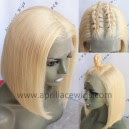Hair color is a powerful tool for self-expression and transformation. Whether you want to cover grays, experiment with a bold new shade, or simply refresh your current color, understanding the process of coloring your hair is essential to achieving the desired results In this comprehensive guide, "Navigating Hair Coloring: Techniques and Advice for Achieving Your Perfect Hair Shade," we'll take you through everything you need to know about coloring your hair at home or in a salon. From choosing the right hair dye to the steps for application and post-color care, this guide will equip you with the knowledge and confidence to achieve the perfect hair color.
Section 1: Choosing the Right Hair Dye
Selecting the right hair dye is the first step towards achieving your desired hair color. In this section, we'll discuss the various types of hair dyes and factors to consider when choosing the perfect one for you.
1.1 Temporary Hair Dye
- Overview of temporary hair dye.
- Advantages and limitations of temporary color.
- Ideal situations for using temporary hair dye.
1.2 Semi-Permanent Hair Dye
- Explanation of semi-permanent hair dye.
- Benefits and considerations of semi-permanent color.
- When to opt for semi-permanent hair dye.
1.3 Permanent Hair Dye
- Understanding permanent hair dye.
- Pros and cons of permanent color.
- Factors to weigh when deciding on permanent hair dye.
1.4 Hair Dye Shades and Tones
- Choosing the right shade and tone for your skin and style.
- The importance of undertones in hair dye.
- How to determine your skin's undertone and complementary hair colors.
Section 2: Preparing Your Hair for Coloring
Preparation is key to achieving the best hair color results. In this section, we'll cover the essential steps to prepare your hair for coloring, whether at home or in a salon.
2.1 Strand Test
- Conducting a strand test to preview the hair color outcome.
- Why strand tests are crucial for avoiding surprises.
- Interpreting the results of a strand test.
2.2 Patch Test
- Performing a patch test to check for allergies or sensitivities.
- The importance of patch tests in preventing adverse reactions.
- How to conduct a patch test effectively.
2.3 Hair Condition
- Evaluating the condition of your hair before coloring.
- Pre-coloring treatments for damaged or dry hair.
- Ensuring your hair is free from previous color build-up.
2.4 Hair Washing
- The optimal timing for washing your hair before coloring.
- Avoiding excessive washing that can strip natural oils.
- Recommendations for clean and dry hair on color day.
Section 3: Applying Hair Dye
Once you've selected your hair dye and prepared your hair, it's time to apply the color. This section will guide you through the step-by-step process of coloring your hair effectively.
3.1 Protecting Your Skin and Clothing
- How to prevent hair dye from staining your skin and clothing.
- Recommended protective measures, including gloves and smock.
- Quick tips for easy clean-up during and after the dyeing process.
3.2 Sectioning Your Hair
- Why sectioning your hair is essential for even color distribution.
- Step-by-step instructions for creating sections in your hair.
- Techniques for achieving professional-looking results.
3.3 Mixing and Preparing the Hair Dye
- Properly mixing hair dye components for consistent results.
- Following instructions on hair dye packaging.
- Using a bowl and brush for precise application.
3.4 Applying the Hair Dye
- Techniques for applying hair dye to different hair lengths.
- Evenly distributing the dye for uniform color.
- How to avoid overlapping and ensure complete coverage.
3.5 Timing and Processing
- Determining the correct processing time for your hair type and dye.
- Monitoring the color development during processing.
- Understanding the role of heat in hair dye processing.
Section 4: Aftercare and Maintenance
Caring for your newly colored hair is essential to maintain its vibrancy and health. In this section, we'll explore post-color care routines and tips.
4.1 Rinsing and Shampooing
- Properly rinsing out hair dye after processing.
- Selecting the right shampoo and conditioner for colored hair.
- Recommendations for post-color hair washing frequency.
4.2 Protecting Your Hair Color
- How to prevent premature fading of your hair color.
- Using UV protection products for colored hair.
- Avoiding hot water and excessive heat styling.
4.3 Color Touch-Ups
- The frequency of touch-ups for maintaining your hair color.
- Quick and easy methods for touching up roots or faded areas.
- Seeking professional assistance for intricate touch-ups.
4.4 Color Correction
- Dealing with color mishaps or undesired results.
- When to consult a professional colorist for color correction.
- DIY color correction tips for minor issues.
A Transformative and Empowering Experience
Coloring your hair can be a transformative and empowering experience, allowing you to express your style and individuality. By choosing the right hair dye, properly preparing your hair,
following the application steps, and practicing diligent aftercare, you can achieve the perfect hair color and maintain its vibrancy. Whether you're looking to refresh your current shade, experiment with a bold new look,
or simply cover grays, the journey to the right hair color starts with knowledge and preparation. So, embrace the art of hair coloring, and let your true colors shine through with confidence.












































